Joseph D. Mallonee, 1856-1917
by Brian Stevenson
last updated May, 2016
Amateur microscopist J.D. Mallonee was particularly active during the late 1880s through the 1890s. He was a member of the Department of Microscopy of the Brooklyn Institute (and served as Curator in 1892), the New York Microscopical Society, the Rochester (New York) Academy of Science, and the American Postal Microscopical Club.
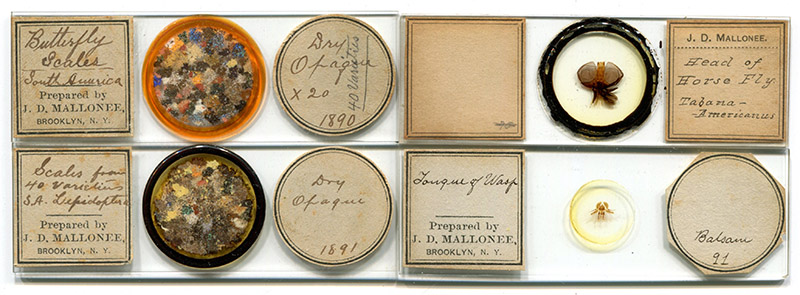
Figure 1.
Examples of slides prepared by J.D. Mallonee. The three labeled with his Brooklyn address are dated 1890-1891. The slide label without an address may be from a later date – Mallonee moved several times after leaving Brooklyn, and so might have opted for un-addressed labels. The lower left-hand slide may be the same preparation he exhibited at the 1891 Annual Reception of the New York Microscopical Society, described in their records as “Scales of forty varieties of South American Lepidoptera”. Mallonee may have used a unique mechanical microscope stage to display this slide, as the previous year he displayed to the Brooklyn Institute “Scales of thirty varieties of South American lepidoptera, opaque; shown by automatic revolving stage”.
Joseph Mallonee was born on March 13, 1856, in Decatur, Indiana. His father, Ezra, was a gunsmith. Joseph probably learned the skills of fine metalworking from his father.
In 1884, Mallonee began work for a steel type manufacturer. He moved to Brooklyn, New York, in 1888, to become superintendent and manager of New York Stencil. He remained with that company until around 1892. It was during those years that microscope slides labeled “Brooklyn” were produced.
Mallonee established, sold, and worked for several other type-making firms through the remainder of his life. His products were used by typewriter and other mechanical writing machine manufacturers.
As noted below in an obituary, he had a great interest in microscopical investigations. Mallonee showed a range of interests. Figure 1, above, shows several insect-oriented microscope slides, including two preparations made of small clumps of scales from the wings of numerous exotic butterflies. In 1895, he gave a talk to the Rochester Academy of Science on “the structure of rocks as shown by polarized light”. In 1897, he wrote about collecting and examining “microscopic crystals of quartz” from Herkimer, New York. In 1900 he wrote on artificial onyx for the American Postal Microscopical Club.
Joseph and his wife, Ida, had three children, two of whom lived to adulthood. The elder daughter, Alice, took over operations of her father’s type manufacturing business after his death.
Further details on Mallonee’s life were described by a colleague, who wrote the following obituary for Office Appliances magazine:
“J.D. Mallonee, one of the best known typewriter type manufacturers in the United States, passed away not long ago at his home in Stratton, Maine. Mr. Mallonee was himself a designer of types and was a man of keen, artistic instinct who strove for perfection in workmanship. He was a man of keen analytical mind and had a wide sense of the relations of things with each other. In the use of fine tools and precision devices he was an expert. Mr. Mallonee was also a student and wrote occasionally on topics which interested him. He was a man who always held before him the ideal of more things to do; of machines to be built, books to be read, to be written, etc.
Mr. Mallonee was a native of Indiana and was the last of the family of Mallonees who settled in the northern part of the state, and for whom a village was named. He left Indiana at an early age and after following other pursuits, in 1884 he entered the service of the American Writing Machine Company at Corey, Pa. After their removal to Hartford, Conn., in 1886, he was made superintendent of the factory, where his ability as a designer of special tools and machinery soon made the old Calligraph a formidable rival to other machines then on the market. By this time Mr. Mallonee invented the type-rolling machine which made his name so widely known.
In 1888 he removed to New York and established the New York Stencil works, where for six years he was the head of this type manufacturing company. During this time he supplied type to the following typewriter companies: Smith Premier, Yost, Columbia, National, Williams and many others, and assisted inventors in the development of their ideas, building models of many writing machines. Among the principal patents which Mr. Mallonee sponsored were the type-rolling machine, a routing machine for cutting characters on steel or brass wheels used in numbering machines and cash registers, an electric time stamp, etc. In 1893 Mr. Mallonee became superintendent of the Burns Typewriter Company at Buffalo, N.Y., where he installed a type-making department which was conducted in his name for a number of years. He remained with this company for two years, then went into business for himself, making type and machines and devices of precision. His factory having been destroyed by fire, Mr. Mallonee then engaged in equipping typewriter factories with machinery and tools for the manufacture of their own type. He equipped the Columbia. Manhattan, Underwood, Williams, Fay Sholes, Oliver. L.C. Smith and Burroughs Adding Machine factories. likewise the factory of the Meyer-Tuver Typewriter Company of Zurich, Switzerland. The Yost company had previously adopted the Mallonee method.
It is interesting to note that Mr. Mallonee himself personally engraved all of the originals or master type used in connection with his type machinery. It is said that as an engraver of type faces he was without rival. During his life he engraved over twenty thousand master type, including nearly every language used on a writing machine.
Mr. Mallonee was a member of many scientific societies and was particularly interested in microscopy. He was a prominent Mason and for two years was a representative in the New Jersey state legislature. During the later years of his life he lived at Alstead, N.H., and afterward at Trenton. N.J., where he erected a splendid factory for the manufacture of writing and adding machine type”.

Figure 2.
An 1893 advertisement from J.D. Mallonee, for his engraved type.
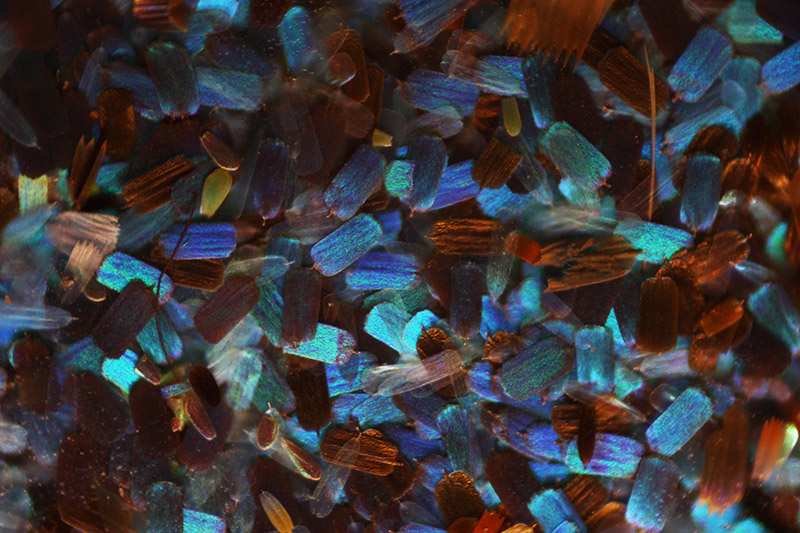
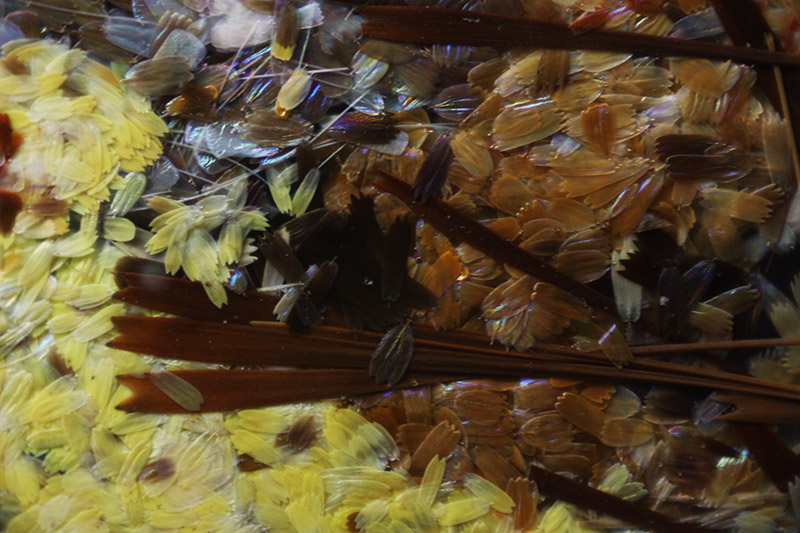
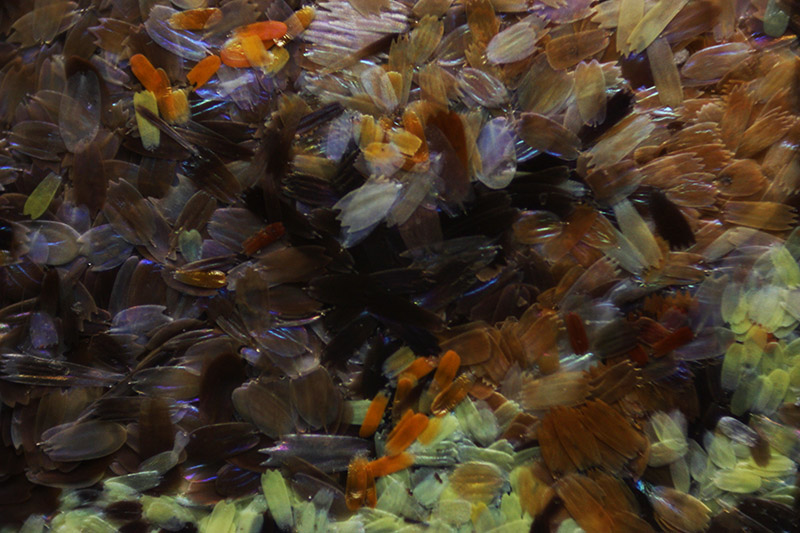
Figure 3.
Microscopic views of J.D. Mallonee slides of butterfly scales from South America. Photographed using a 10x objective lens and a C-mounted SLR digital camera, on a Leitz Ortholux II microscope.
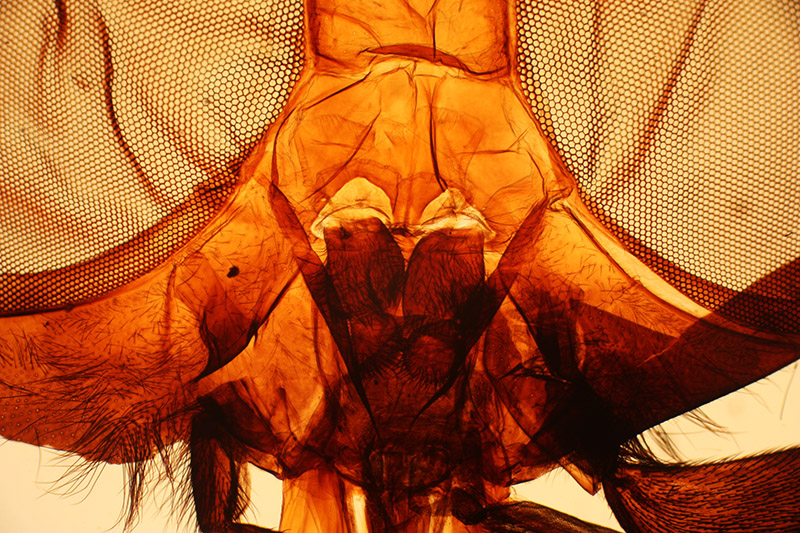
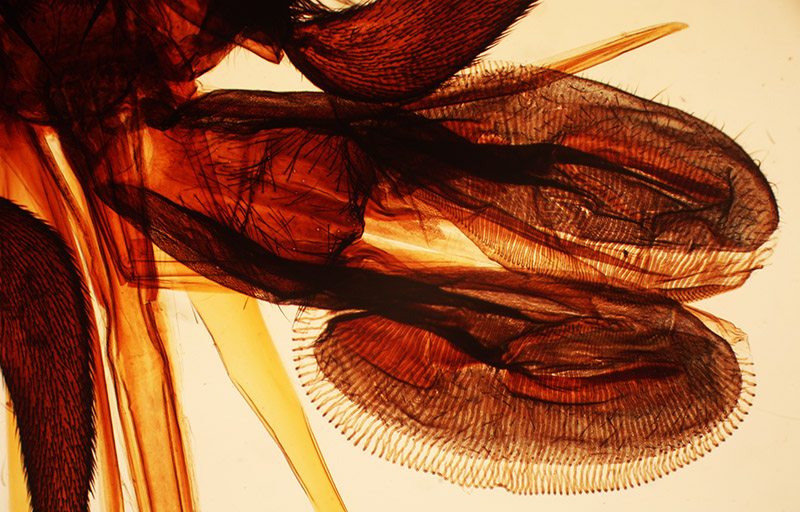
Figure 4.
Microscopic views of the head of a horsefly, Tabanus americanus, prepared by J.D. Mallonee. Photographed using a 3.5x objective lens and a C-mounted SLR digital camera, on a Leitz Ortholux II microscope.
Resources
Brooklyn Daily Eagle Almanac (1892) “The Brooklyn Institute, Department of Microscopy - S.E. Stiles, M.D., Pres.: Henry S. Woodman, Vice-Pres.; George E. Ashby, Sec.; E.C. Chapman, Treas.; J.D. Mallonee, Curator. Membership, 131”, page 94
Death record of Joseph D. Mallonee (1917) accessed through ancestry.com
The Federal Reporter (1909) Vol. 169, pages 647-653
Journal of the New York Microscopical Society (1891) Annual Reception of the Society, Vol. 7, pages 119-124
Journal of the New York Microscopical Society (1891) Meeting Of October 16th, Vol. 8, page 35
Mallonee, J.D. (1897) Herkimer County still ahead, The Mineral Collector, Vol. 4, page 127
Mallonee, J.D. (1897) Notes on some slides: Artificial onyx, The American Monthly Microscopical Journal, Vol. 21, page 114
Mallonee, J.D. (1913) Action of heating on steel, American Machinist, page 280
Office Appliances (1917) J.D. Mallonee, Vol. 25, page 154
Proceedings of the Rochester Academy of Science (1895) “The first lecture of the Popular Lecture Course for the season of 1895 was then given by Mr. J.D. Mallonee, of Buffalo, entitled: The structure of rocks as shown by polarized light”, Vol. 3, page 175
Scientific American (1890) The annual reception of the Department of Microscopy of the Brooklyn Institute, Vol. 62, page 307
Scientific American (1893) Advertisement from J.D. Mallonee manufacturing, Vol. 68, page 94
Typewriter Topics (1917) J.D. Mallonee, Vol. 35, page 78
Typewriter Topics (1917) “The steel type manufacturing business of J. D. Mallonee, who, as announced in the last issue of ‘topics’ recently died, will be continued by his daughter Alice M. Mallonee, at Stratton, Maine. For a good many years in the past Miss Mallonee has been very active in the operation of the business and her experience and well-known ability qualify her to keep the business going on its usual sound basis.”, Vol. 35, page 128
U.S.A. census, birth, and death records, accessed through ancestry.com
Yearbook of the Brooklyn Institute of Arts and Sciences (1908) Annual exhibition, March 12, pages 150-151






